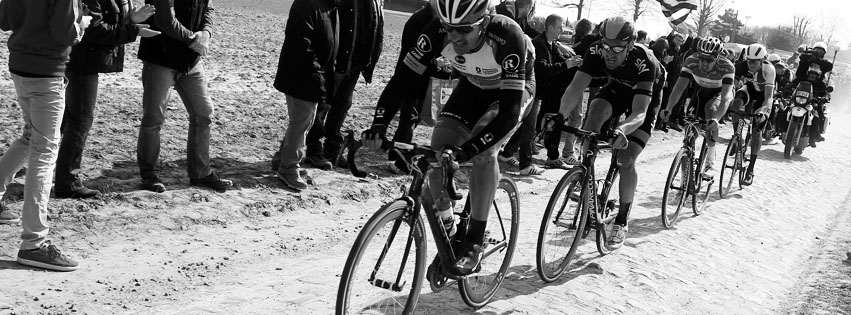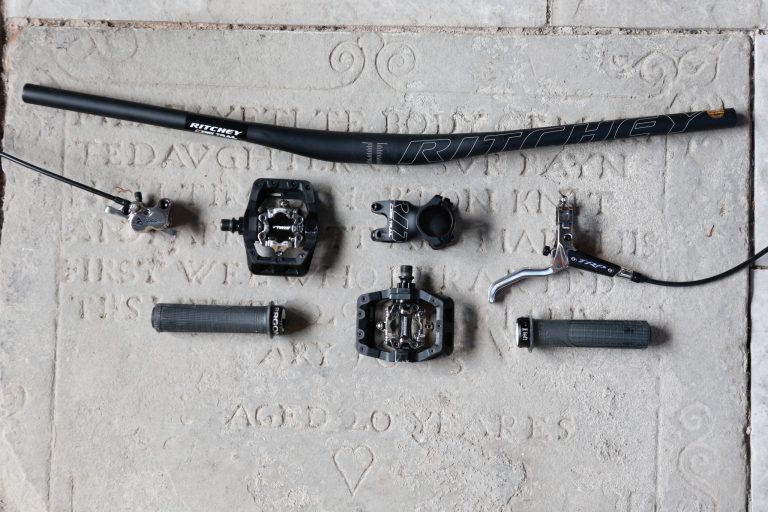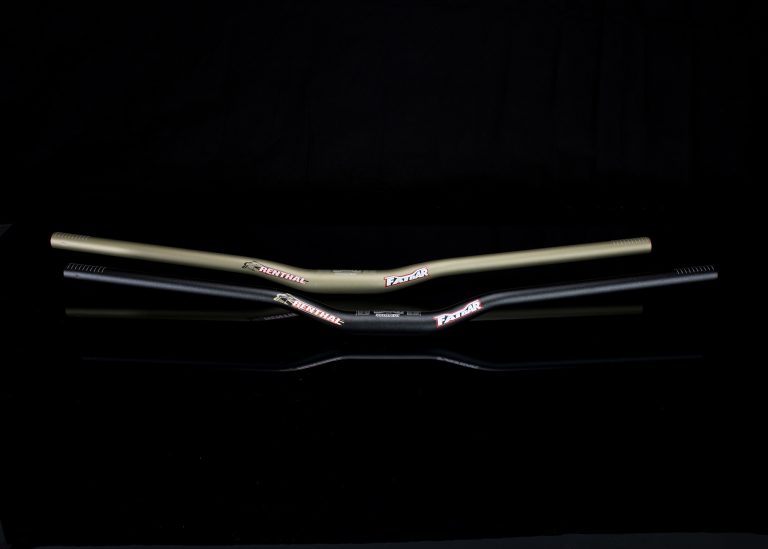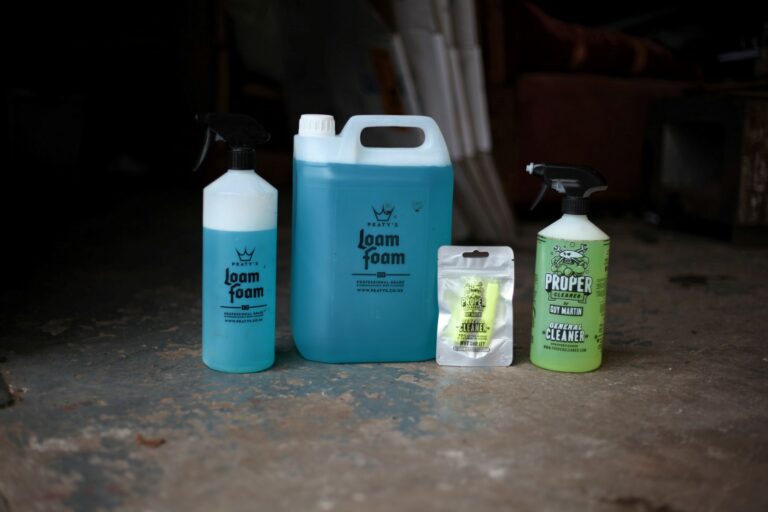2011 Session 88 test bike (with pedals)
| Weight | Headangle | Bottom Bracket | Chainstay | Wheelbase |
| 39.31lb | 63.4º | 13.4” | 17.3” | 47.5” |
2012 Carbon Session 9.9 (Mino Race link) test bike (with pedals)
| Weight | Headangle | Bottom Bracket | Chainstay | Wheelbase |
| 37.46lb | 62º | 13.8” | 17.3” | 47.4” |
Whilst the 9.9 is a very different bike to what has gone before it – slightly more travel, 800g lighter and the adjustment – it’s really only marginally higher and only just over a degree slacker. Nevertheless Mino offers a quick change to the leverage rate resulting in changes to ride characteristic and as a result the geometry, which does just as much in terms of riding style. We were keen to see how much, would it really be transformed from ground hugger to pedal beater with a flip of a chip?
 DETAIL
DETAIL
The detail in such things as the fork bump stop that incorporates entry for internal cable routing, main bearings moved inboard, the simplicity of changes in Mino link, custom tuned shock, air fork, excellent componentry, graphic balance, frame protection, all minor but very important details that probably 90% of bike manufacturers either forget or omit.
We’ve already talked about adjustability, this has been done by moving both shock and seat stay pivots and altered the length of full floater extension on lower shock mount. This change to leverage rate, which is now flatter in the middle of the stroke, where you spend a lot of the time, is said to enable the rear wheel to move out of the way quicker. We’d become used to the improved damper tune on this year’s bike and wondered how much the change of pivot location would have on the bike’s ride characteristic and hit absorption.
But then that would prove impossible to compare, because unlike many companies Trek say they have gone to lengths to adjust the damper to suit the pivot changes. Because the flatter middle doesn’t hold the rider up so much they have compensated with a tune on the shock. This year’s bike was firm, but does the 9.9 really have an exact replica of the damper units used by Trek World Racing that many web sites talk about?
 RIDE
RIDE
First up, the setting guide offered by Trek on their website already puts this bike in a different league. This is the kind of detail riders need, allowing a quick and easy base from which to dial in their personal ride characteristic.
Lively, quick, always with nothing but superb balance, in the rough the 9.9 offers good support and line speed although it did have a touch of wander up front that lacked total precision. The rear, whilst offering excellent grip and speed carrying characteristic, was not 100% predictable, but I’m not sure whether that was the damper. There was certain emptiness at times especially after continuous hits.
For both the front and rear dampers the base setting provided isn’t too bad at all, you really have to take your hat off to Trek for providing the rider with something off which to work. I found that I needed a shade more on each of compression and boost, but hell, really not far off. Like I said, I feel this to be the kind of detail nearly all riders need.
Compared to the 2011 bike the flatter rate in the middle makes it not quite as easy to pick up and drive as some bikes, certainly more of a wheels on ground bike, but fast wheels on ground, holding its shape very well indeed, although just that fraction too much movement in the dampers that would improve it even more. This bike equipped with BOS would, I think, shut the game down completely.
Still, it is very good, the bike certainly holds firm in hard berms too, particularly in the ‘Mino Park’ setting allowing rapid exits. In fact the link switch was pretty much a two minute business, not that I would move away from the slack setting because the time difference hardly matters during the course of a whole run. In small areas the slightly higher/steeper setting might gain you a hundredth in one tiny section, but if you’re using this as a downhill machine then you might as well forget all about the Mino business.
 The fork settings were excellent although needed slightly longer to loosen up than the main chassis. Not quite sure what I expected with the ‘Hybrid air’ fork, it works OK, I simply prefer the sensitivity and ease of maintenance that other brands offer. The shock also became a case for posting off to the service centre after our time on it – average. On the plus side, soundproofing was more than adequate and protection seems all in order on the 9.9.
The fork settings were excellent although needed slightly longer to loosen up than the main chassis. Not quite sure what I expected with the ‘Hybrid air’ fork, it works OK, I simply prefer the sensitivity and ease of maintenance that other brands offer. The shock also became a case for posting off to the service centre after our time on it – average. On the plus side, soundproofing was more than adequate and protection seems all in order on the 9.9.






